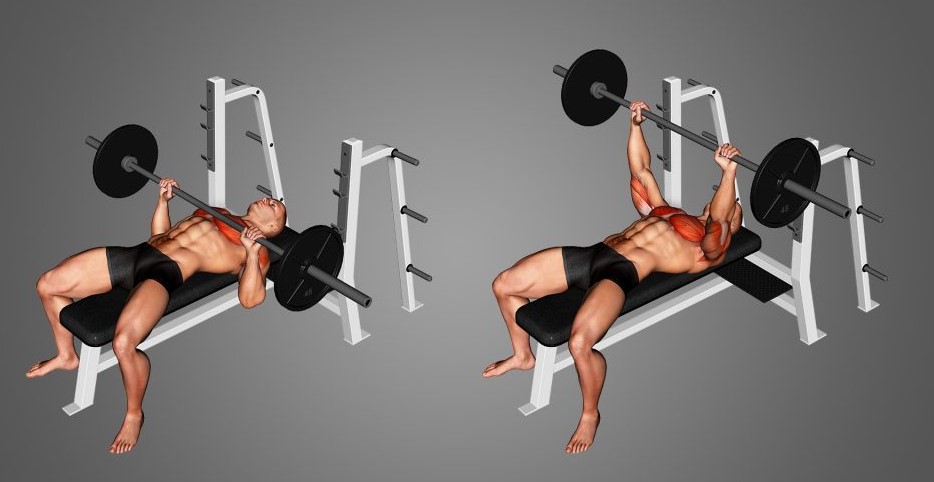BOURSESSENEGAL – The bench press is a cornerstone of strength training, often considered a key indicator of upper body strength. Whether you are a seasoned athlete or just starting your fitness journey, mastering the bench can help you build muscle, improve your overall strength, and enhance your performance in various sports. In this guide, we’ll explore the techniques, benefits, and tips for optimizing your bench workout.
What is the Bench Press?
The bench press is a weightlifting exercise that targets the pectoral muscles, shoulders, and triceps. It involves lying on a bench and pushing a weighted barbell or dumbbells upward until your arms are fully extended. This compound movement not only strengthens the upper body but also engages core muscles for stability.
Why Should You Incorporate Bench Press into Your Routine?
Including the bench press in your workout routine offers numerous benefits. Here are some compelling reasons to add this exercise to your regimen:
- Builds Muscle Mass: The bench press is highly effective for hypertrophy, helping you gain muscle mass in your chest, shoulders, and arms.
- Improves Strength: As a compound exercise, it recruits multiple muscle groups, leading to greater overall strength gains.
- Enhances Athletic Performance: Strengthening your upper body can improve performance in various sports, such as basketball, football, and swimming.
- Boosts Confidence: Successfully increasing your bench press weight can significantly boost your confidence in the gym.
Proper Bench Press Technique
To maximize the benefits and minimize the risk of injury, it’s crucial to perform the bench press with proper technique. Here’s a step-by-step guide:
Setting Up
- Position Yourself on the Bench: Lie flat on your back on the bench. Your eyes should be directly under the barbell.
- Feet Placement: Keep your feet flat on the floor. This provides stability and helps generate power during the lift.
- Grip the Bar: Grasp the bar with both hands slightly wider than shoulder-width apart. Your wrists should be straight.
The Lift
- Unrack the Bar: Lift the bar off the rack with your arms fully extended. Hold it above your chest.
- Lower the Bar: Slowly lower the bar to your chest, keeping your elbows at a 45-degree angle from your body. This helps protect your shoulders.
- Press Up: Push the bar back to the starting position. Fully extend your arms without locking your elbows.
Common Mistakes to Avoid
- Bouncing the Bar: Don’t bounce the bar off your chest. This can lead to injury and reduces the effectiveness of the lift.
- Arching Your Back: Maintain a natural arch in your lower back, but avoid excessive arching. Your shoulder blades should remain retracted.
- Neglecting Your Feet: Keep your feet planted. Lifting your feet off the ground can compromise stability.
Variations of the Bench Press
To keep your workouts fresh and target different muscle groups, consider incorporating these bench press variations:
Incline Bench Press
The incline bench press targets the upper portion of the pectoral muscles. Adjust the bench to a 30-45 degree angle and follow the same technique as the flat bench.
Decline Bench Press
The decline bench press emphasizes the lower chest. Set the bench to a decline and perform the lift similarly to the flat bench.
Dumbbell Bench Press
Using dumbbells instead of a barbell allows for a greater range of motion and helps correct muscular imbalances. The technique remains similar; just ensure you maintain control of the weights.
Tips for Improving Your Bench Press
- Warm-Up Properly: Always begin with a proper warm-up to prepare your muscles and joints for the workout.
- Progressive Overload: Gradually increase the weight you lift to continue making gains. Aim to increase your weight by 5-10% each week.
- Focus on Form: Prioritize proper technique over lifting heavier weights. Good form will prevent injuries and promote muscle growth.
- Use a Spotter: When lifting heavy, having a spotter can help you stay safe and push your limits.
- Incorporate Accessory Exercises: Exercises such as push-ups, tricep dips, and chest flys can enhance your benc performance by strengthening supporting muscles.
Benefits of the Bench Press for Different Populations
For Beginners
If you are new to strength training, the bench is an excellent exercise to start building upper body strength. It establishes a foundation for more complex movements as you progress in your fitness journey.
For Athletes
Athletes can benefit from the bench by improving their overall strength, which translates to better performance in their respective sports. A strong upper body is crucial for activities that require pushing, throwing, or striking.
For Older Adults
Strength training, including the bench , is vital for older adults to maintain muscle mass, bone density, and functional fitness. It promotes independence and enhances the quality of life.
Conclusion
The bench press is a powerful exercise that offers numerous benefits, from building muscle to improving overall strength and athletic performance. By mastering proper technique, incorporating variations, and following the tips provided, you can optimize your bench routine and achieve your fitness goals. Remember, consistency is key. Stick with it, and you’ll see remarkable results in no time!
By understanding the fundamentals and committing to practice, you’re well on your way to becoming proficient in the bench . Whether you’re lifting for strength or simply for fun, this exercise can be a rewarding part of your fitness journey. Happy lifting!
REFERENCE : https://www.cdcfoundation.org/



